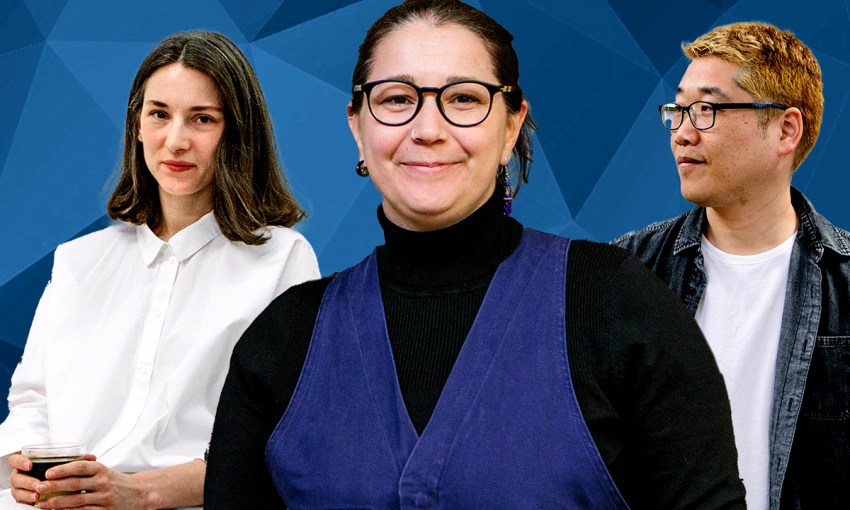CityMag is getting to know the five artists who are part of ACE Open's 'Studios: 2021' exhibition, to understand the opportunities the organisation's studio residencies give to participants. This week, we meet Sundari Carmody, Oakey, and Jonathan Kim.
Meet the artists of ACE Open’s ‘Studios: 2021’ (Part I)
Midway through 2020, ACE Open welcomed five artists into its studio space, as part of the arts organisation’s annual Studio Program.
Studios: 2021
Ace Open
Lion Arts Centre, North Terrace, Adelaide 5000
Tues—Sat: 11am ’til 4pm
FREE
Exhibition runs until 18 December.
More info
This article was produced in collaboration with ACE Open.
For the participating early-career artists – Sundari Carmody, Anna Gore, Jonathan Kim, Oakey and Loren Orsillo – the Studio Program is a fully supported professional development opportunity, offering the artists 24-hour access to studios for 12 months.
Due to the pandemic, this 2020 cohort of artists were given 18 months in the space, and the resulting work is available to view as part of ACE Open’s current exhibition, Studios: 2021, which runs until 18 December.
Over the next two weeks, CityMag is spending time chatting to the artists about how the Studio Residency has influenced their career and practice, and where they hope to go from here.
Meet multifaceted artists Sundari Carmody, Oakey and Jonathan Kim in conversation about their work below.
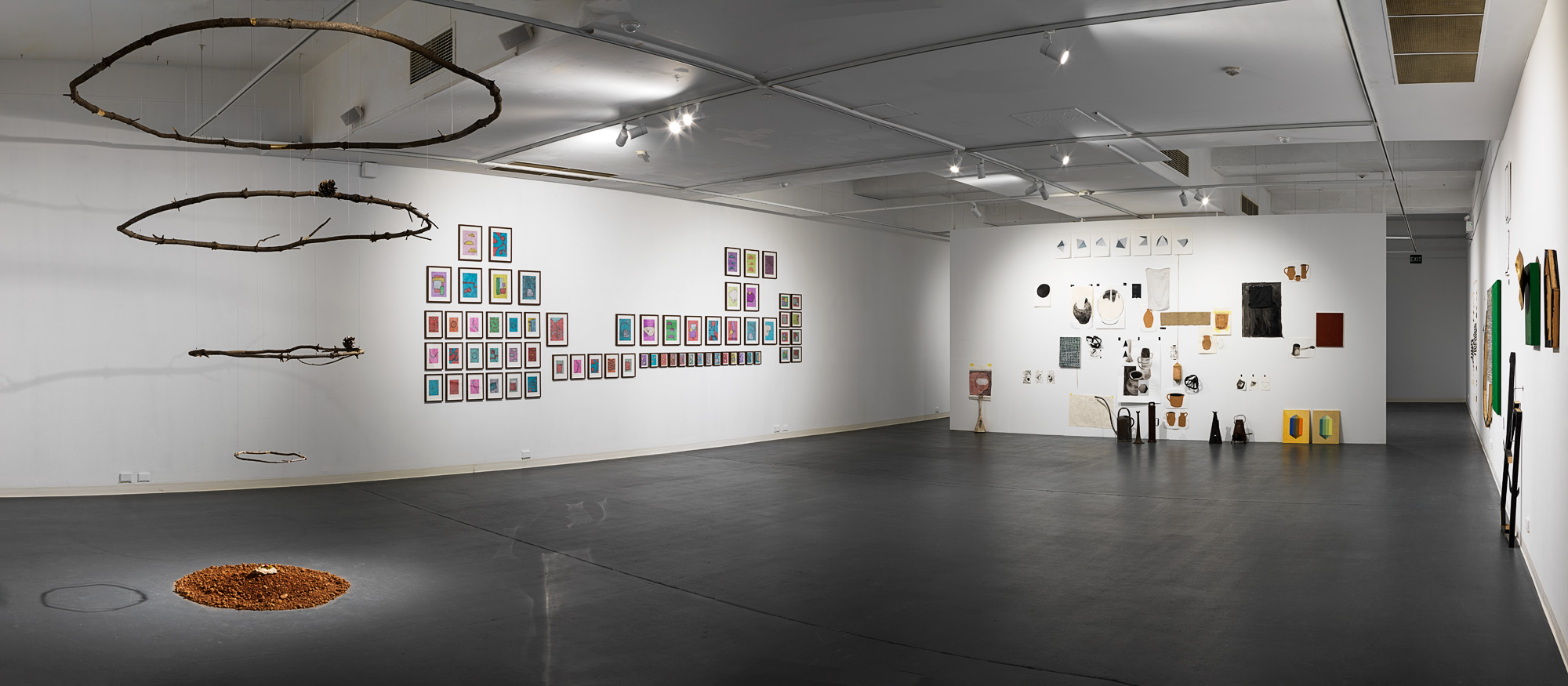
ACE Open’s exhibition ‘Studios: 2021’
Sundari Carmody
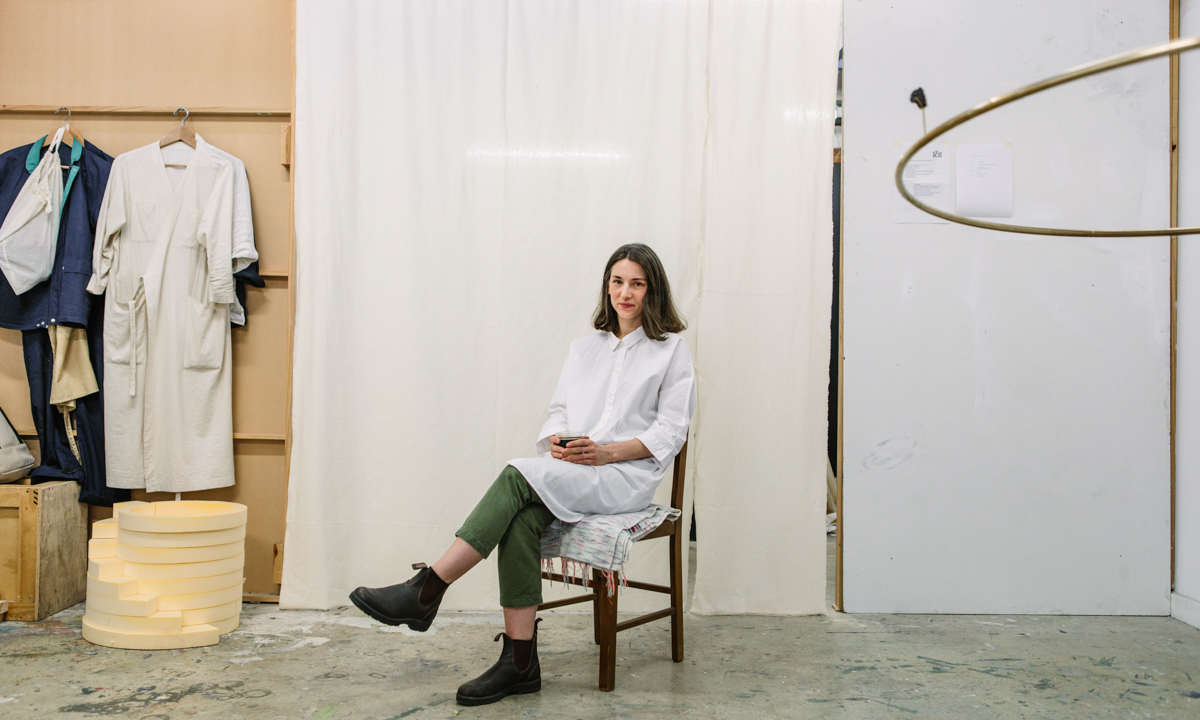
Tell us about the body of work you’ve created that’s on show in exhibition, Studios: 2021.
In the gallery, a collection of plaster blocks are laid out on a drop sheet from my studio. Collectively these forms are called ‘Models for Cosmic Architecture’. Some of them resemble a structure, ruins at Olympia, amphitheatre, altarpieces, shrines, sanctum, cosmic architecture. The forms echo sites that attune us to the cosmos and structures that orient themselves to celestial bodies.
My practice is based around ideas that explore relationships between consciousness and the cosmos. Observatories, sporting fields, and temples are architectural sites where human experience encounters its cosmic dimension. The events that take place at these sites can be seen as ritualistic in nature and they are repeated cyclically. Our bodies and the cosmos are intimately entwined. These architectural sites tune our awareness to this connection.
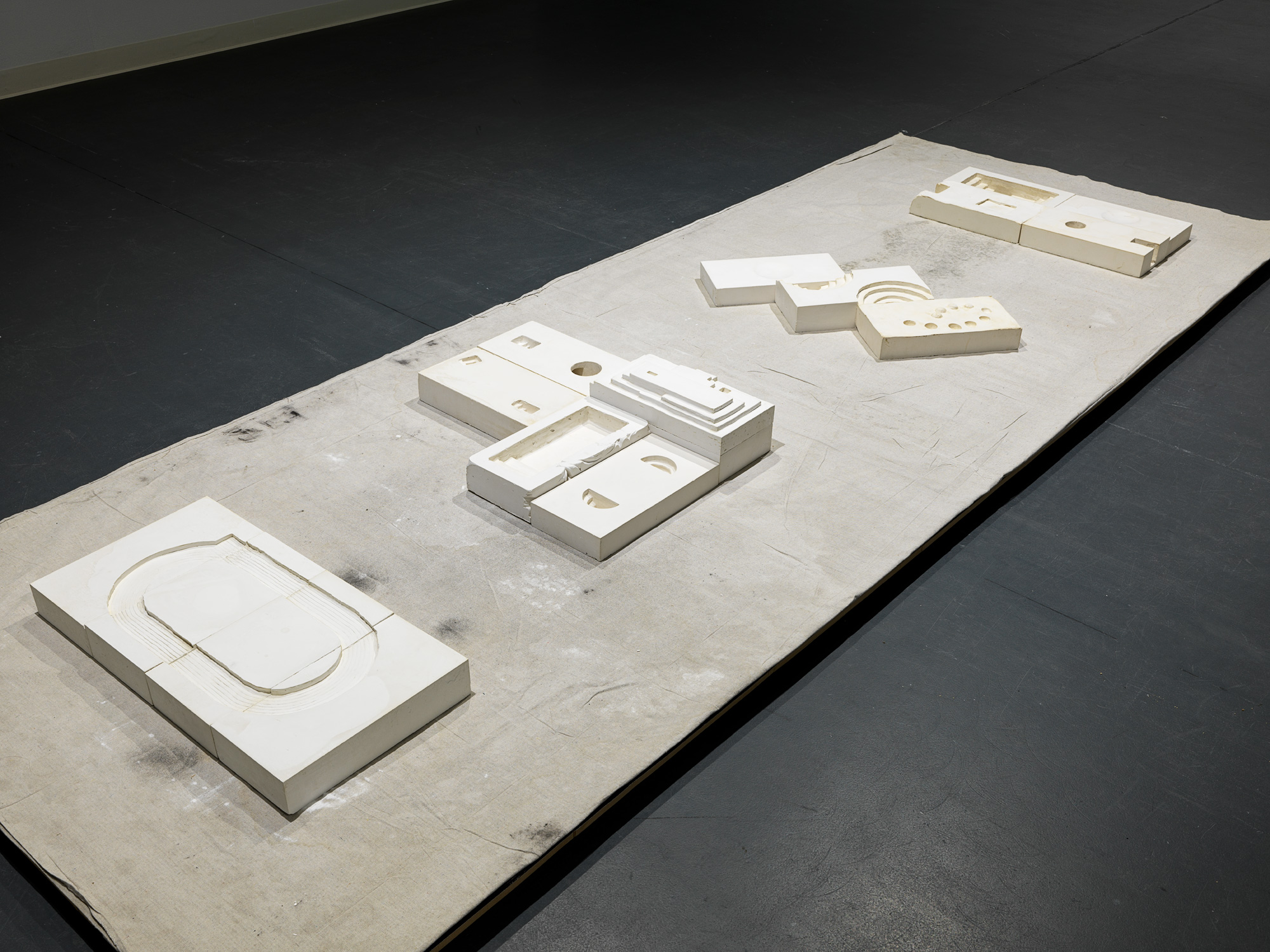
This image: Grant Hancock
As an artist and in your practice, where were you at before your residency with ACE and where are you now?
The provision of a space that is dedicated to making is something I have not always had but it is crucial for the development of a sculpture practice. The studios have the dual benefit of supporting independent, practice-led research, while also providing a space to contribute to the exchange of ideas and experience with local artists and curators. This has been vital for deepening my understanding of the broader contexts that my practice exists within. There is a sense of acknowledgement and endorsement that comes with having a studio space attached to an institution like ACE Open.
I am always reflecting on how I am approaching the development of my practice. The studio residency has provided time to examine my rhythms, workflow and if I am managing to find the right balance of research and making to provide the greatest benefit to my practice overall. Since moving in to the studio in mid-2020, I have returned to elementary methods of art making, such as hand modelling clay and plaster, and enjoying the simplicity of sitting at the workbench in the studio and drawing on paper. I have also begun investigating new avenues for making sculptures using digital design that are translated by fabricators into physical forms.
The works that I developed during my residency were shown in Slow Moving Waters: TarraWarra Biennial 2021, my first museum exhibition, and If the future is to be worth anything: 2020 South Australian Artist Survey at ACE Open.

What’s next for you?
My residency at ACE Open concludes in mid-January 2022, and I will be seeking a new studio space. I’m working with Guildhouse and Exhibition Studios on my first public art project. It will be completed in 2022. I will be presenting new work in two exhibitions interstate. Generally, my aim will be to maintain the momentum that I have been building over the last two years so that I can make the most of the projects I have coming up in 2022.
What will you be doing five years from now?
You might find me at an international studio residency in Switzerland, maybe at CERN, home of the Large Hadron Collider. Hopefully future Sundari will be arriving by bicycle in the quiet, early hours to a big, light-filled studio with a feeling of excitement and anticipation to work on a new project for some prestigious art museum.
Oakey
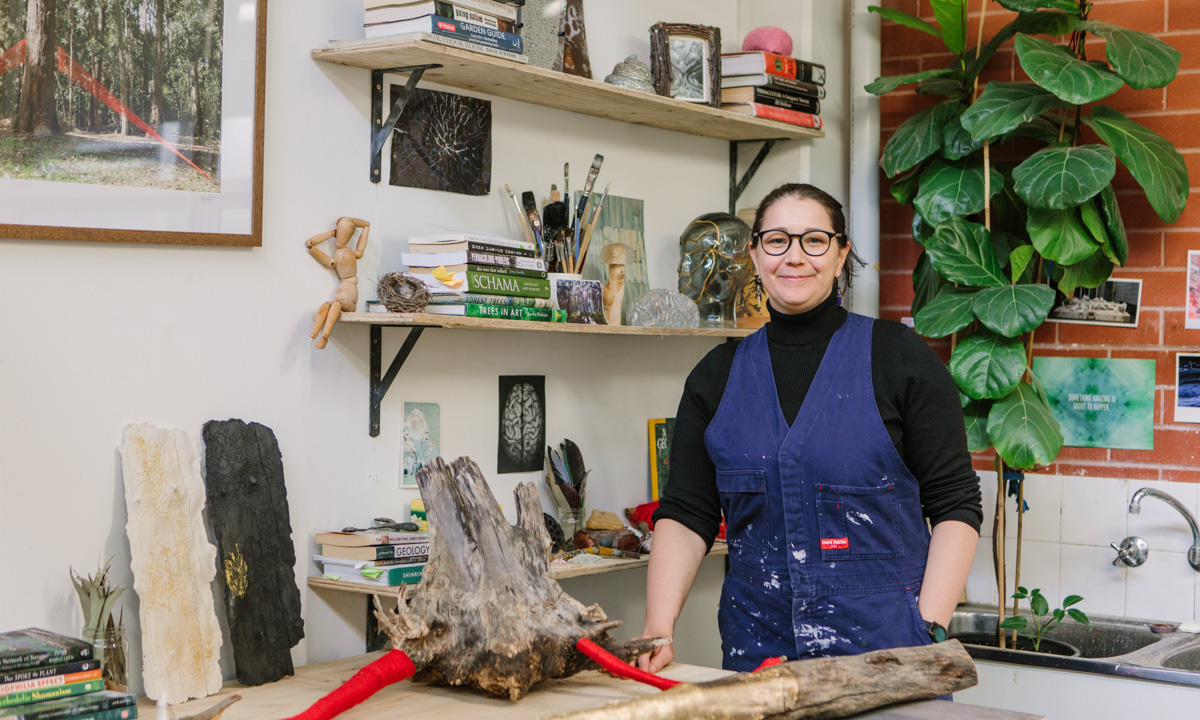
Tell us about the body of work you’ve created that’s on show in the exhibition, Studios: 2021.
‘Resonance’ was born from a residency I did in August for the Nature Festival and ForestrySA. I spent two weeks alone at Thomas Hill House at the Cudlee Creek fireground on Peramangk country, exploring and connecting to the land. It was a profound time as I slowly felt myself melting into, and forming a deep relationship with, the landscape.
Almost all of the material that makes up the installation, including the sound, was gathered from the forest.
The work has many layers to it but it is inspired by sound ecologist Gordon Hempton, who travels the world recording and trying to preserve natural silence and quiet spaces. The small red rock is a marker he uses to locate previous recording locations.
As an artist and in your practice, where were you at before your residency with ACE and where are you now?
Before my residency I had just completed my honours degree through Flinders Uni and Adelaide College of the Arts.
I was awarded the residency at ACE Open by the Helpmann Academy, and it really has helped me and my practice beyond measure.
After study I wasn’t entirely sure of my direction, but after 18 months spending time around industry professionals and my fellow studio artists, I am so much more confident in who I am and where my work grows from.
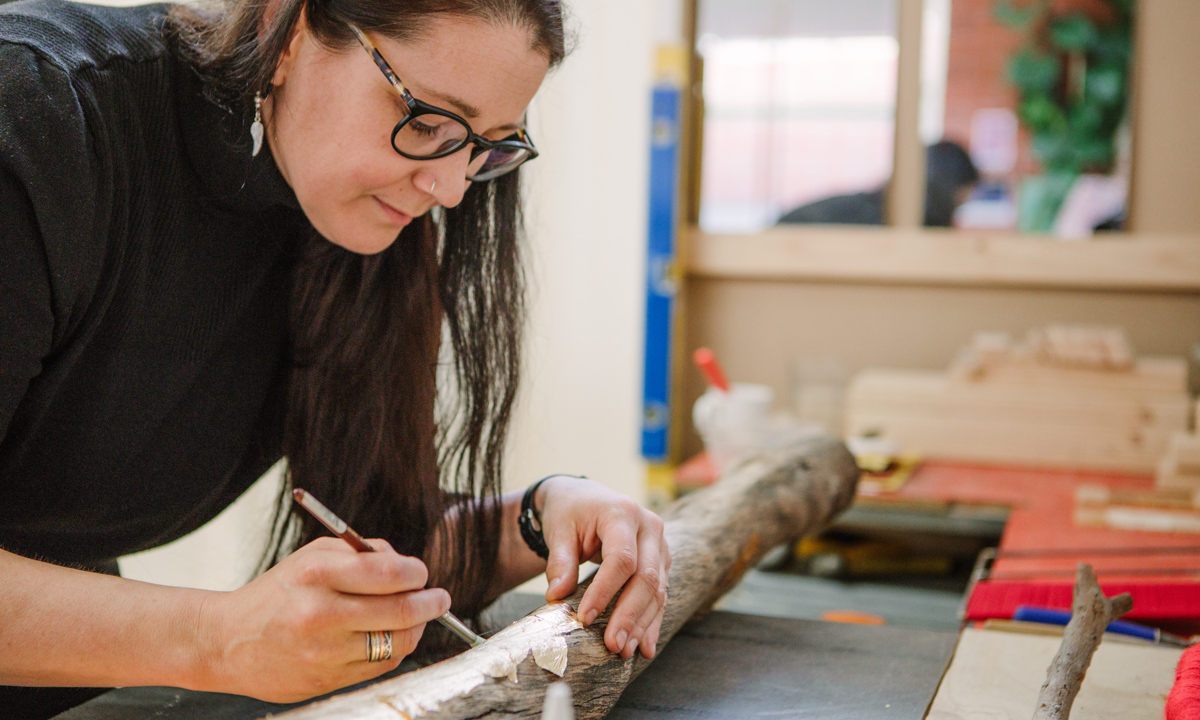
What’s next for you?
I’m looking at expanding my practice further in to the public art realm and taking on more commissions. I’ll be moving in to a new studio space in January and I’m looking forward to making the most of creating in a new environment.
What will you be doing five years from now?
I intend on having interstate and international exhibitions depending on how things unfold.
I will definitely be looking at taking part in more residencies. I find them so beneficial to my art practice. I want to immerse myself in different natural landscapes and learn what I can from the land and give back in any way I can.
Jonathan Kim
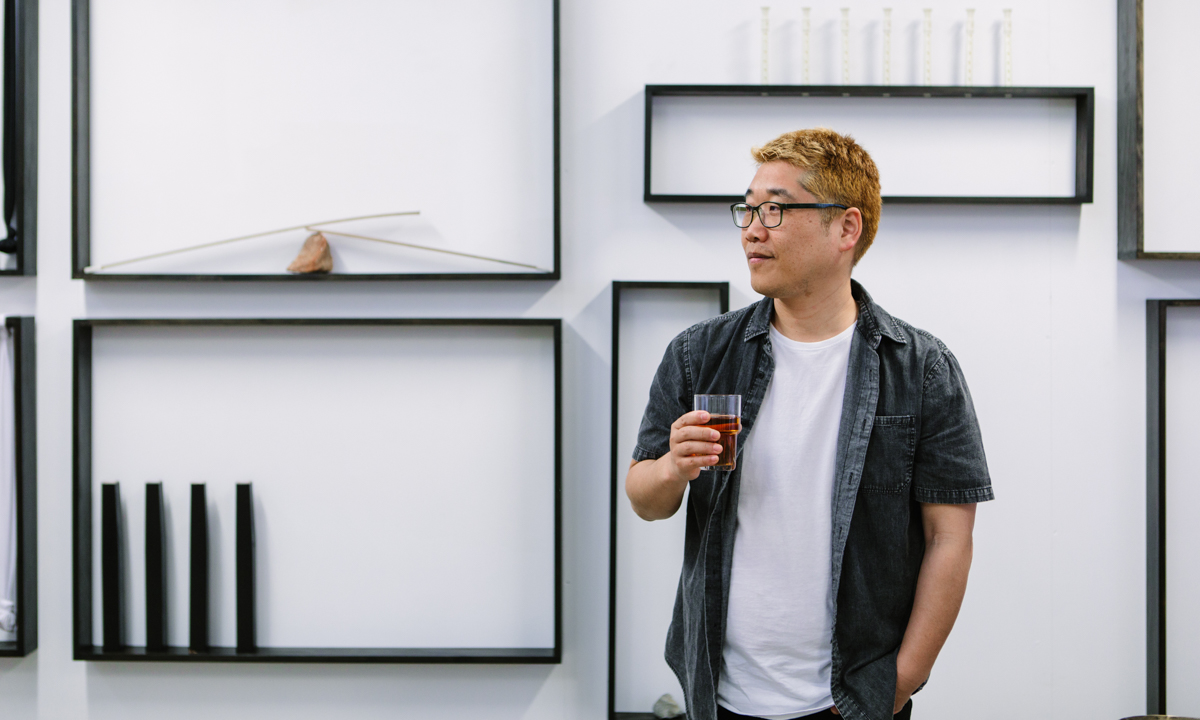
Tell us about the body of work you’ve created that’s on show in the exhibition, Studios: 2021.
I have developed my work mainly in sculpture and installation art, but I have also steadily grown the painting process. I used a variety of mediums, but at some point, I started to enjoy using crayons or oil pastels. The difference in density between crayon (oil) and ink (water) explained well the ‘Density,’ one of the keywords of my study. Also, the marks and traces of crayons are the result of the time my body and matter interacted, and that’s part of the Gong-gan-seong (spatiality) I often talk about.
What’s special about this ‘Mediation’ series is that pictorial ideas match sculptural ideas. To be honest, I have been trying to put my paintings and sculptures into one context for a few years, but I haven’t realised it. In the meantime, I have painted with prominent hard edges in independent themes. As a result, my paintings were sometimes very far from my sculptures. While preparing for this exhibition, I really wanted to implement this task that I had been delaying.
In that context, the sculptural method for Gong-gan-seong, which is my long-term research topic, is applied to this painting process. The structures used in the paintings are those found based on the body’s experience. It can say as mediation variables and total effects. It is not unreasonable to think that these pictures are the pre-stage of my sculpture because they were drawn in the same way as countless sketches on my visual diary. However, it was coloured this time and entered the frame without being carved. That is also the reason why I drew this series in the notebook.
Finally, I wanted to show the audience the practice process in the ACE’s studio through the preparation process of this series that lasted for two months. I thought about how to respond to the theme of this exhibition, ‘Studio’. Over the past 18 months, I have participated in various paintings, sculptures, installation art, and even performances and film production in this studio. I could not show all of these outcomes at once. So I thought it would be better to show my research and practice process of expressing my topic of Gong-gan-seong. Therefore, Through the new ‘Mediation’ series, I wanted to show the audience in a compressed way how to make a new theme into my research.
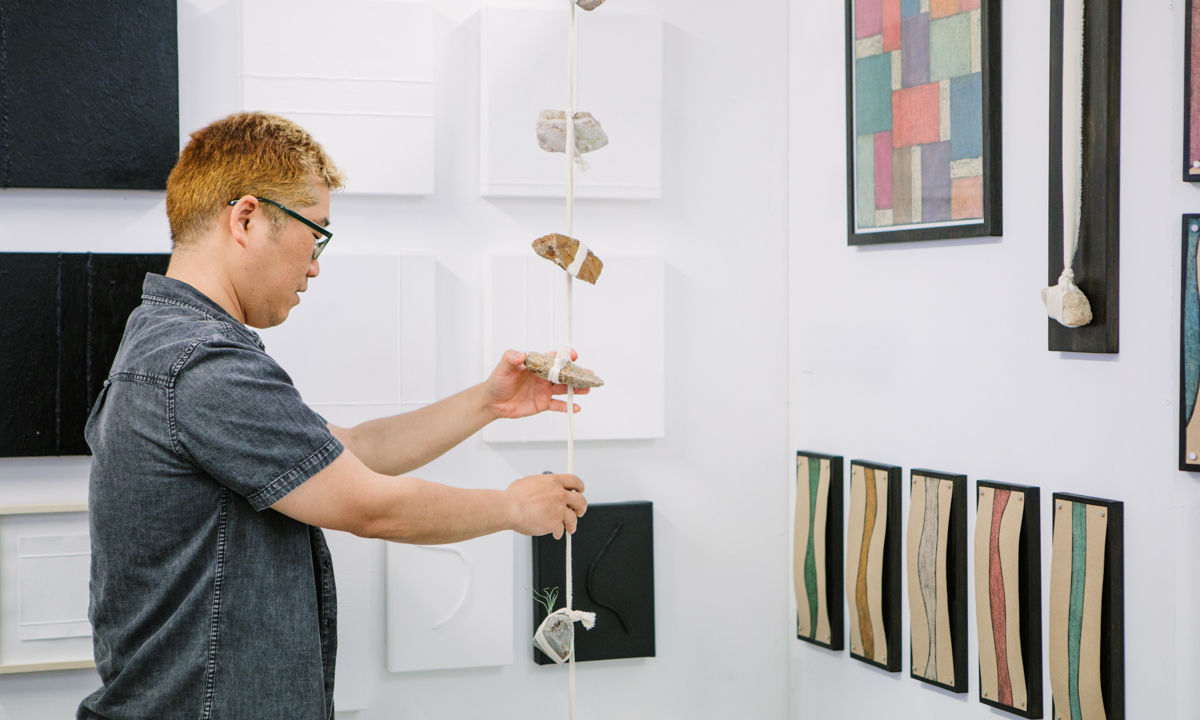
As an artist and in your practice, where were you at before your residency with ACE and where are you now?
I graduated from the University of South Australia in 2018. In 2019, I had the British School at Rome Residency and the Sauerbier House Culture Exchange Artist in Residence Program. In 2020 and 2021, I am conducting a residency program at the ACE Open studio.
Before starting ACE Open Residency, my research defined my art concept, Gong-gan-seong (공간성, spatiality), and investigated how I could reflect that concept into my art practice. The study of Gong-gan-seong was inspired by the Man-nam (만남, Encounter) theory of Korean artist Lee Ufan. Therefore, it was crucial in my practice to create a relationship between the elements in my artwork and present it visually. On the other hand, the ACE Open Residency, which has been held for the past 18 months, has made efforts to expand the existing meaning of Gong-gan-seong. As part of that, I have been conducting experiments to apply the concept to new media or genres.
I am currently working on a new collaboration project Yeon (연, 聯, 緣, 戀) that combines dance and art with Korean choreographer Sun Young Lee. The film 12 Doors, screened in this year’s OzAsia Festival, was the first project conducted with Lee. The project Yeon focusses more on the role of dance for visual art if the role of visual art for the dance stage was more important in 12 Doors. The first stage of Yeon last month was an experiment, and intensive research will proceed in the future. Please look forward to the collaboration created in the future.

What’s next for you?
I will continue to apply my art concept, Gong-gan-seong, to other media and other genres. I have been working on several projects conducted during the last COVID-19 period to apply my art concept to various media and expand it to social concepts through collaboration with other genres.
Firstly, through collaboration with Korean choreographer Sun Young Lee, I have been looking for ways to combine visual art and dance to continue the cooperative relationship between artists in the two countries isolated by COVID-19. However, through this experience, we have discovered a collaborative model that is possible even in the post-COVID era. Therefore, my future practice will conduct additional research and practice on the collaboration between art and dance for the time being.
Secondly, this pandemic’s research on digital media will also continue. I created installation art using real-time streaming to connect the two spaces cut off the exchange by the pandemic. This experiment accidentally gave new insights into Gong-gan-seong and various additional ideas. I am devising additional projects using real-streaming technology and plan to create works related to them over the next few years.
What will you be doing five years from now?
I do not know. I was born and raised in Korea, lived in China, and came to Australia. I have travelled to many countries for the past 20 years. However, I have been isolated for two years because of COVID-19. I am ready to live anywhere now. A new environment is a perfect stimulus for an artist for a new idea. Moreover, this time is very desperate. Maybe you will see me working in another state or another country, such as Korea, China or somewhere.



